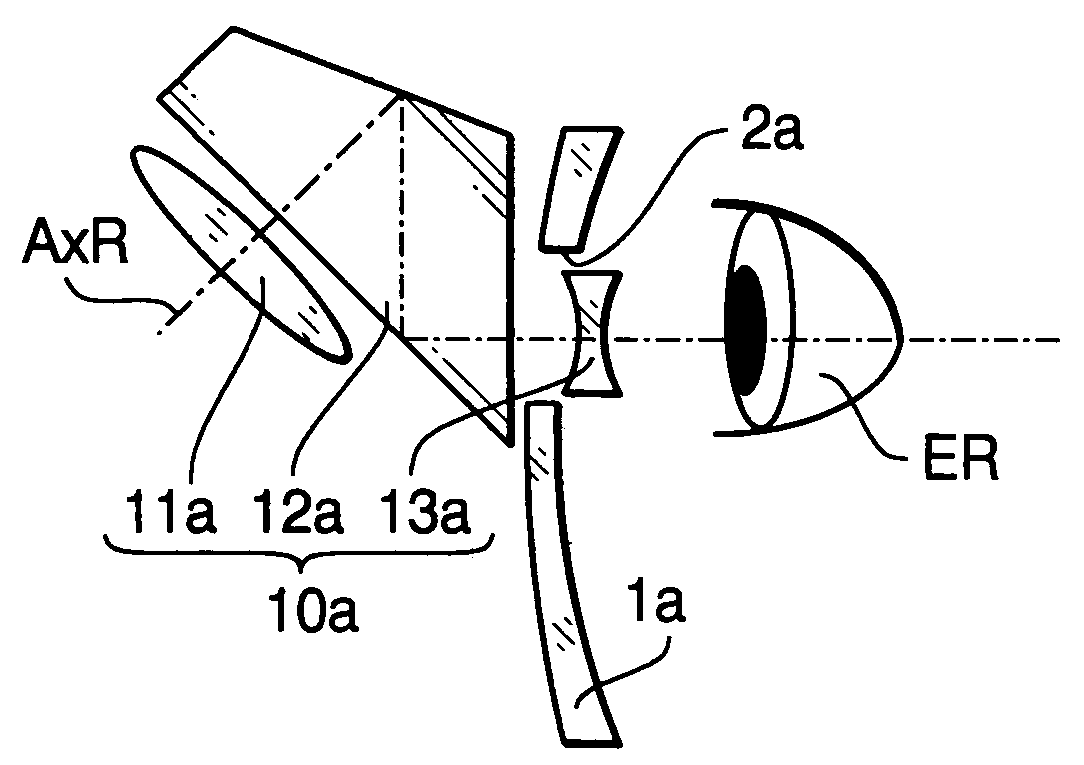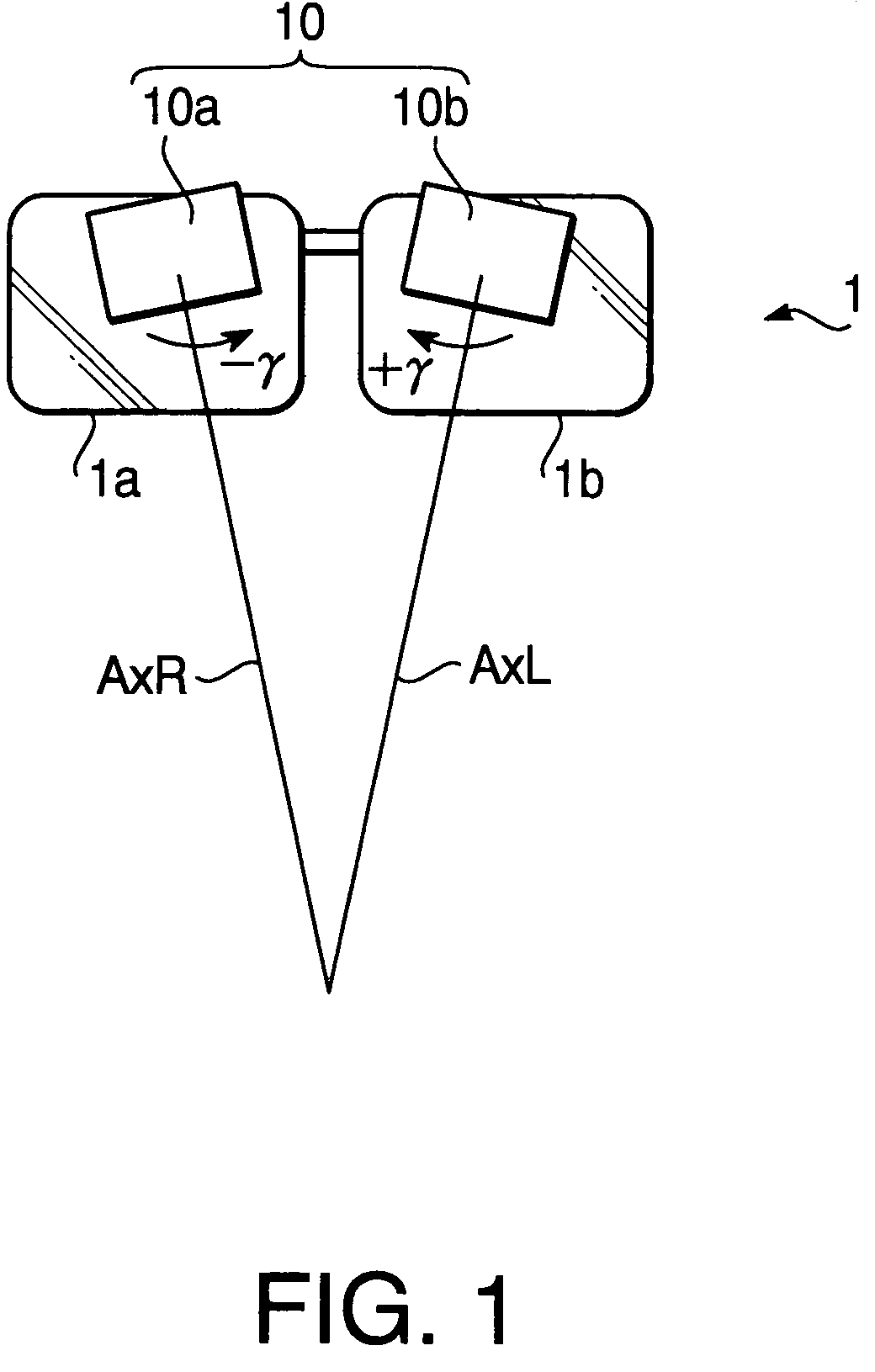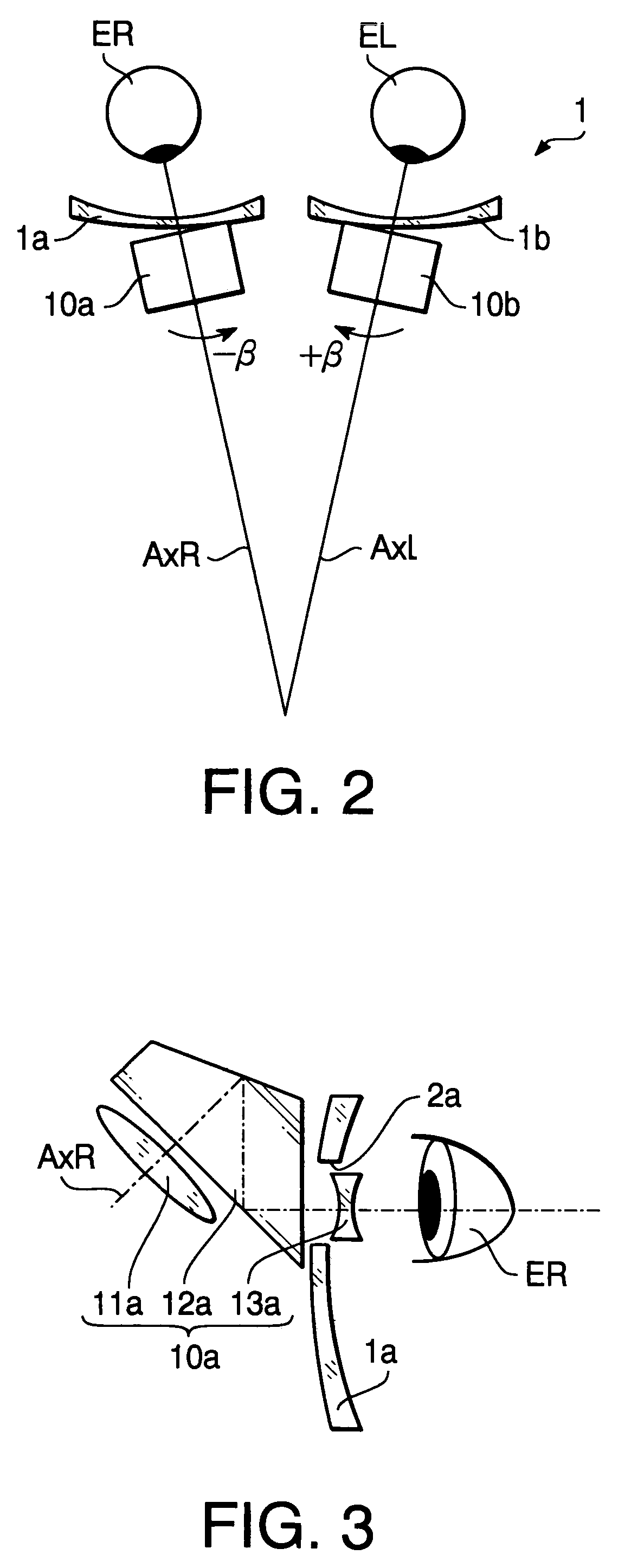Binocular magnifying glasses
a technology binocular lenses, which is applied in the field can solve the problems of wearer being required to lean his or her head, wearer being unable to withstand long-term use of binocular magnifying glasses, and additional problems, so as to reduce the burden on the wearer
- Summary
- Abstract
- Description
- Claims
- Application Information
AI Technical Summary
Benefits of technology
Problems solved by technology
Method used
Image
Examples
first embodiment
[0057]FIGS. 1–3 show a configuration of binocular magnifying glasses 10 to which an adjustment method according to a first embodiment of the invention is applied. FIG. 1 is a front view of the binocular magnifying glasses 10. FIG. 2 is a top view of the binocular magnifying glasses 10. FIG. 3 is a side view of the binocular magnifying glasses 10 showing a configuration of a magnifying glass 10a for the right eye (ER).
[0058]As shown in FIGS. 1 and 2, the binocular magnifying glasses 10 have the magnifying glass 10a for the right eye (ER) attached to a lens 1a of eyeglasses 1, and a magnifying glass 10b for the left eye (EL) attached to a lens 1b of the eyeglasses 1. An axis AxR is an optical axis of the magnifying glass 10a for the right eye and an axis AxL is an optical axis of the magnifying glass 10b for the left eye.
[0059]As shown in FIG. 3, each of the magnifying glasses 10a and 10b has a magnifying optical system to examine an object in a magnified manner, and a deflector which...
second embodiment
[0102]Hereafter, a second embodiment according to the invention will be described.
[0103]FIGS. 12–14 show a configuration of binocular magnifying glasses 20 according to the second embodiment of the invention. FIG. 12 is a front view of the binocular magnifying glasses 20. FIG. 13 is a top view of the binocular magnifying glasses 20. FIG. 14 is a side view of the binocular magnifying glasses 20 showing a configuration of a magnifying glass 20a for the right eye (ER).
[0104]As show in FIGS. 12 and 13, the binocular magnifying glasses 20 have the magnifying glass 20a for the right eye (ER) attached to a lens 5a of eyeglasses 5, and a magnifying glass 20b for the left eye (EL) attached to a lens 5b of the eyeglasses 5. An axis AxR is an optical axis of the magnifying glass 20a for the right eye and an axis AxL is an optical axis of the magnifying glass 20b for the left eye.
[0105]Since the configuration of the binocular magnifying glasses 20 is similar to the configuration of binocular ma...
third embodiment
[0147]FIG. 21 shows a configuration of a magnifying glass 50c according to a third embodiment of the invention. Similarly to the magnifying glass 20a (20b) of the second embodiment, the magnifying glass 50c can be attached to the eyeglass 5. That is, the magnifying glass 50c has substantially the same configuration as the magnifying glass 20a (20b) except for a mirror group 52c.
[0148]The definitions of adjustment axes defined with reference to FIG. 6 are also applied to the third embodiment.
[0149]As shown in FIG. 21, the magnifying glass 50c has a objective lens 51c having a positive power, the mirror group 52c which deflects light incident thereon from an objective side, and an eyepiece 53c having a positive power, which are arranged in that order from the object side.
[0150]Light passed through the objective lens 51 is reflected four times by the mirror group 52c, and thereafter passes through the eyepiece 53c to be incident on the right eye ER. In FIG. 21, the deflection angle θ,...
PUM
 Login to View More
Login to View More Abstract
Description
Claims
Application Information
 Login to View More
Login to View More - R&D
- Intellectual Property
- Life Sciences
- Materials
- Tech Scout
- Unparalleled Data Quality
- Higher Quality Content
- 60% Fewer Hallucinations
Browse by: Latest US Patents, China's latest patents, Technical Efficacy Thesaurus, Application Domain, Technology Topic, Popular Technical Reports.
© 2025 PatSnap. All rights reserved.Legal|Privacy policy|Modern Slavery Act Transparency Statement|Sitemap|About US| Contact US: help@patsnap.com



